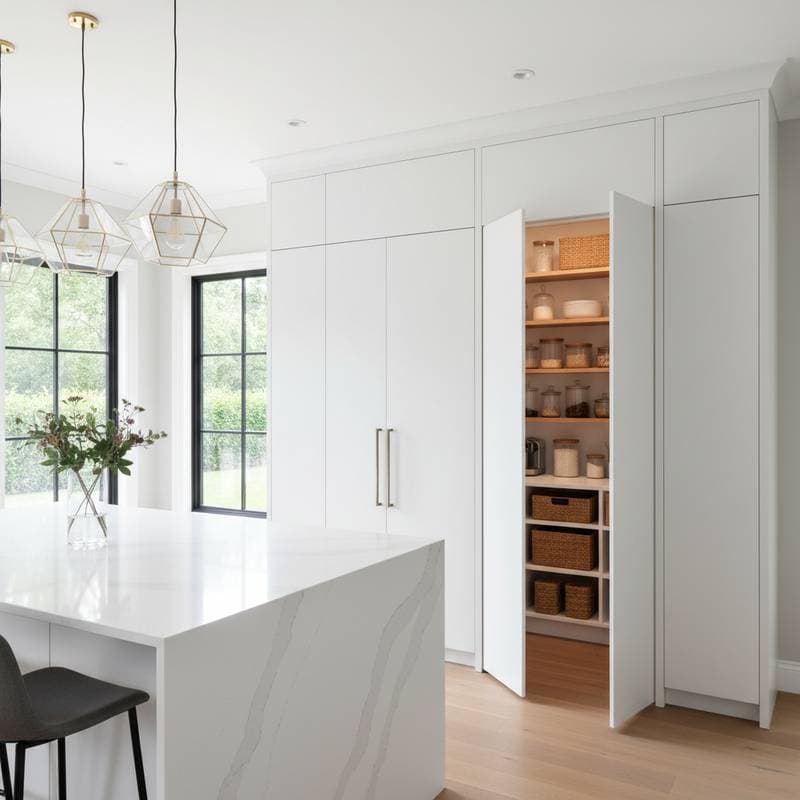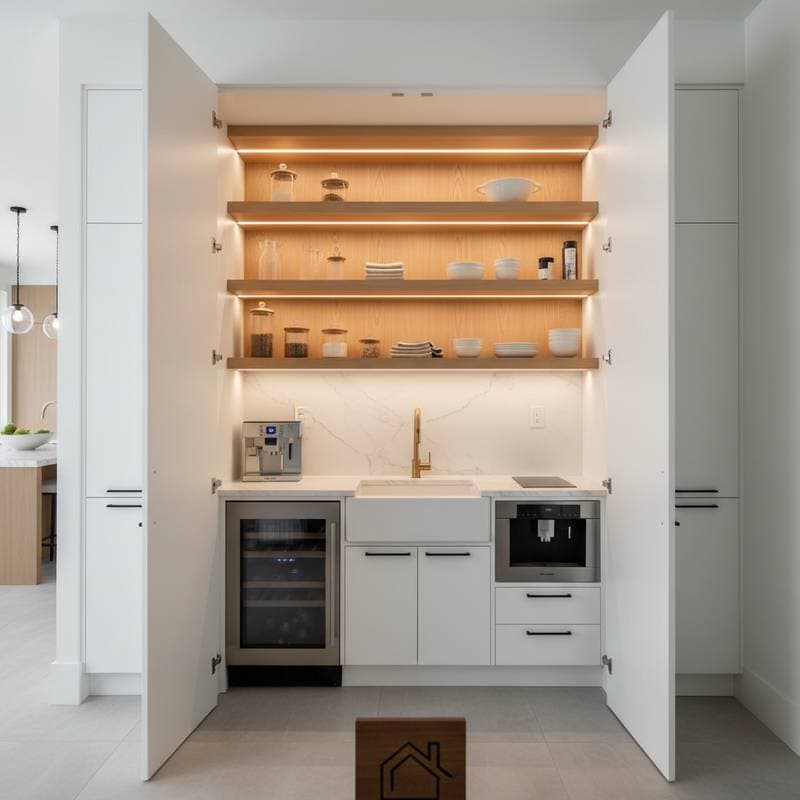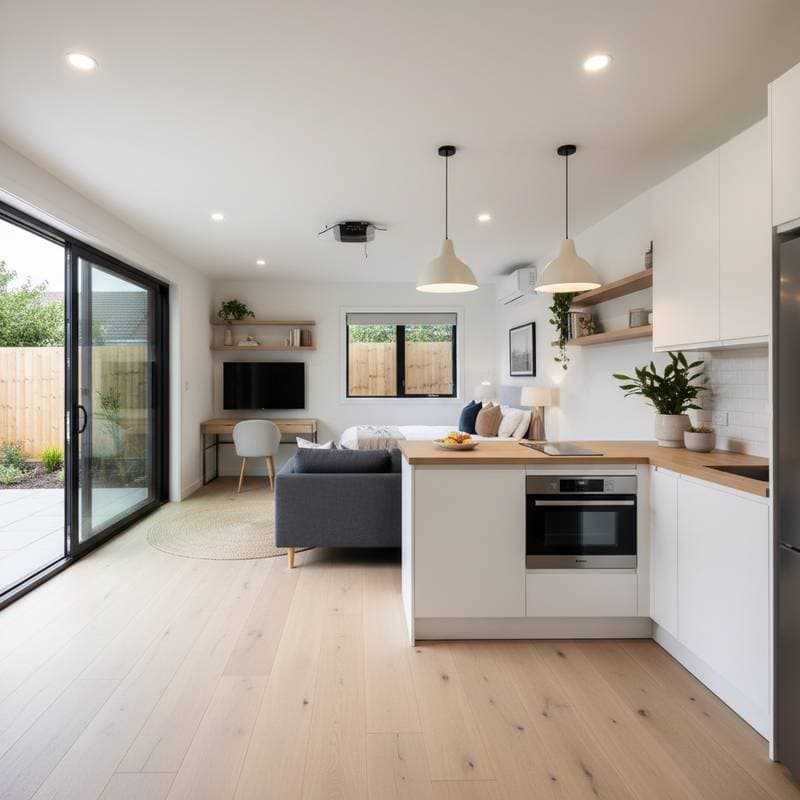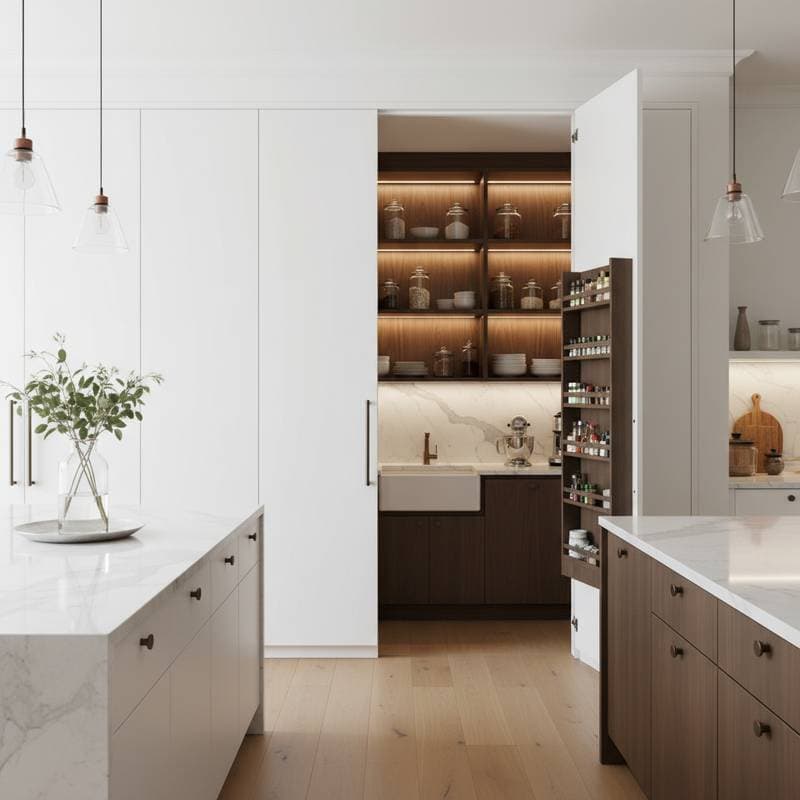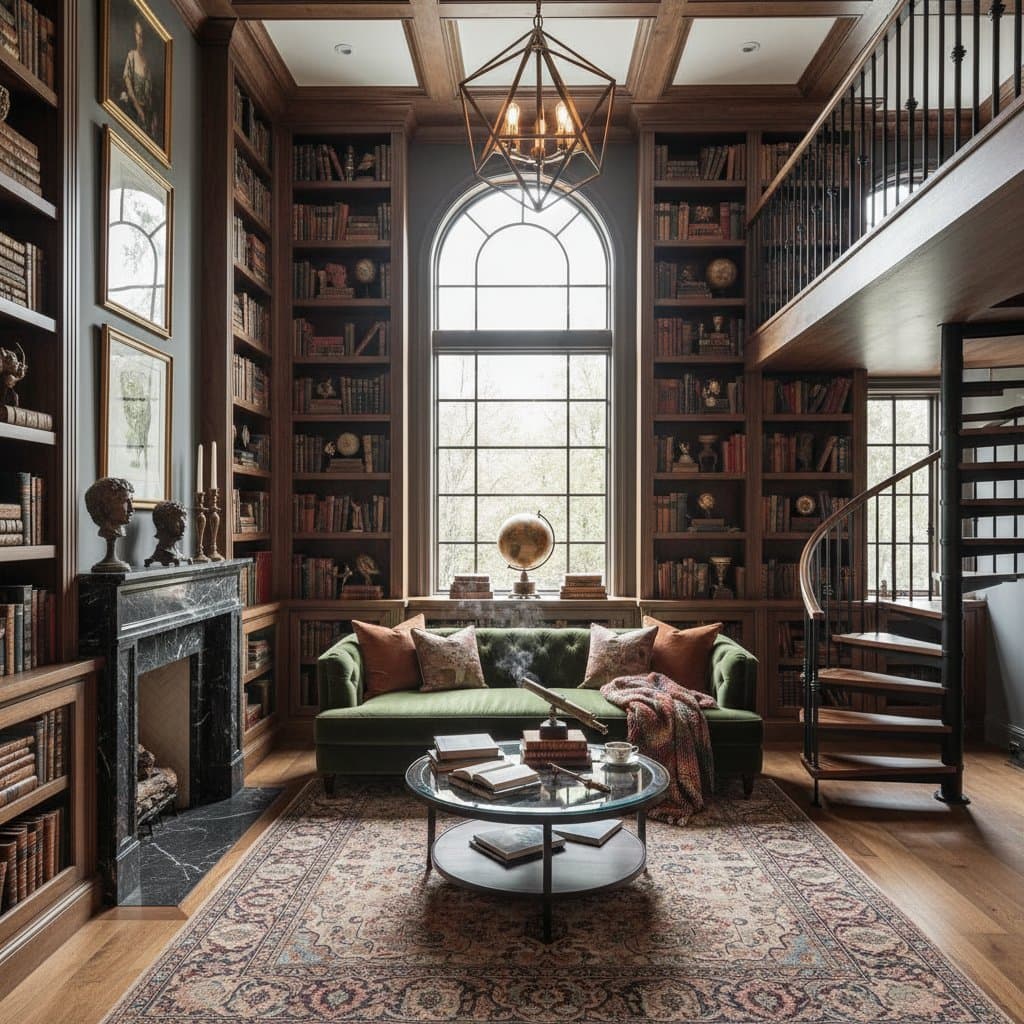Hidden Pantry Upgrades: Boost Home Value by $18,000
Hidden pantries represent a smart investment in kitchen functionality and aesthetics. These concealed storage solutions organize essentials out of sight, maintain a clutter-free appearance, and appeal to prospective buyers seeking modern efficiency. When integrated thoughtfully, such upgrades yield a typical return of approximately $18,000 in resale value for midrange kitchen renovations.
Buyers associate hidden pantries with premium craftsmanship and streamlined living spaces. This feature enhances perceived luxury without requiring extensive square footage alterations. Real estate professionals note that kitchens featuring discreet storage often command premium offers during showings.
Key Cost Considerations
Understanding expense breakdowns helps in budgeting effectively for a hidden pantry installation. Costs vary based on project scope, materials, and site conditions. Below, explore the primary factors influencing total investment.
1. Layout Modifications and Structural Elements
Altering existing layouts significantly impacts expenses. Converting a nearby closet or alcove into a pantry keeps costs below $10,000 in many cases. However, removing load-bearing walls or adjusting plumbing and electrical systems can elevate the price to $20,000 or more, including professional engineering assessments.
2. Door Mechanisms and Concealment
Seamless integration defines the hidden aspect of these pantries. A flush-mounted cabinet door or smooth pivot panel typically adds $2,000 to $5,000, factoring in high-quality hinges and soft-close features. Opt for basic sliding doors to reduce costs by up to 40 percent, though they offer less invisibility when closed.
3. Cabinetry and Internal Shelving
Custom-built cabinetry provides tailored storage solutions at $250 to $600 per linear foot. Select durable hardwoods like maple or oak for longevity in high-use areas. Prefabricated shelving systems cut material expenses in half while allowing adjustable configurations for pots, pans, and dry goods.
4. Lighting and Electrical Upgrades
Illuminating the interior ensures usability and highlights design details. Install recessed LED strips for even lighting at $500 to $1,200, including wiring. Incorporate motion-activated sensors or adjustable dimmers to enhance convenience, particularly for accessing items in low-light conditions.
5. Finishes and Surface Continuity
Maintaining visual harmony requires matching interior finishes to the kitchen. Allocate $700 to $1,500 for extending flooring materials like tile or hardwood into the pantry space. Interior walls benefit from moisture-resistant paint or patterned wallpaper, adding $300 to $600 while protecting against everyday wear.
6. Permits, Inspections, and Compliance
Projects confined to existing structures often bypass permitting requirements. Structural changes or electrical modifications necessitate approvals, with fees ranging from $200 to $600 depending on local regulations. Consult municipal guidelines early to avoid delays during construction.
7. Contingency Planning
Unexpected issues in older properties demand a buffer in the budget. Allocate 10 to 15 percent of the total estimate for potential discoveries such as outdated wiring, hidden framing damage, or moisture intrusion. This precaution prevents project overruns and ensures completion within financial limits.
DIY Approaches Versus Professional Installation
Deciding between self-directed work and hiring experts depends on skill level and project complexity. Each option offers distinct advantages in cost savings and quality outcomes.
Ideal Scenarios for DIY Efforts
Pursue a do-it-yourself approach if a pre-framed closet adjoins the kitchen. Focus on tasks like installing shelves, applying finishes, and adding trim work using standard tools such as a drill, level, and saw. This method reduces labor expenses by 20 to 30 percent, provided measurements remain precise to avoid fit issues.
Limit DIY to non-structural elements, such as organizing shelving and basic painting. Basic power tools suffice for most tasks, but prioritize accuracy in cuts and alignments for a professional finish.
Reasons to Engage Professionals
Opt for licensed contractors when involving wall modifications or intricate door installations. Experts ensure hidden doors align flawlessly with surrounding cabinetry, preventing operational gaps or aesthetic mismatches. Include built-in lighting or a preparation sink only under professional supervision to meet safety standards.
Structural or electrical alterations require certified handling to comply with building codes. Errors in these areas result in expensive corrections, potential fines, or safety hazards.
Essential Safety Measures: Always wear gloves, a dust mask, eye protection, and hearing protection during work. Shut off power at the main breaker prior to any electrical tasks, and verify with a voltage tester before proceeding.
Ongoing Maintenance and Warranty Guidance
Proper upkeep extends the lifespan of a hidden pantry to several decades. Focus on preventing moisture buildup, the primary cause of deterioration in enclosed spaces.
Routine Care Practices:
- Clean spills immediately using a mild solution to avoid warping wood or fostering mold growth.
- Install a compact ventilation fan if humidity levels rise, especially in humid climates.
- Refresh paint or apply sealant to shelves every three to five years to maintain structural integrity.
Most cabinet hardware includes warranties of five to ten years from manufacturers. Retain all documentation from installers and suppliers for reference. Address minor issues like squeaking hinges by tightening screws promptly to prevent progressive misalignment.
The Enduring Appeal of Hidden Pantries in Real Estate
Prospective homeowners value hidden pantries for their role in promoting organized, high-end kitchens. These features eliminate countertop clutter, creating an illusion of greater space and sophistication. Agents observe that properties with integrated storage solutions stage more effectively in photographs and open houses.
Beyond daily utility, hidden pantries contribute to a sense of exclusivity. They conceal bulk items while preserving clean lines, appealing to buyers prioritizing functionality in contemporary designs. Well-executed installations recover 80 to 100 percent of costs upon sale, underscoring kitchens as prime areas for value-enhancing renovations.
Pitfalls to Sidestep in Hidden Pantry Projects
Avoiding common errors ensures the project delivers lasting benefits. Thoughtful planning mitigates risks associated with design and execution.
- Neglecting Airflow: Poor ventilation leads to stale air accumulation and shelf degradation over time.
- Selecting Inferior Hardware: Weak hinges compromise door stability; choose heavy-duty options rated for frequent use.
- Overlooking Illumination: Dim interiors reduce accessibility and diminish the overall polished look.
- Exceeding Shelf Capacities: Heavy loads cause sagging; reinforce with 1-inch-thick boards or sturdy metal supports.
- Excessive Scale: Oversized pantries disrupt kitchen flow; aim for proportional sizing that complements the room's layout.
Practical Steps to Launch Your Project
Begin implementation with targeted actions to streamline the process. Follow this sequence for efficient progress toward a functional upgrade.
- Assess Available Space: Evaluate corners, adjacent hallways, or closets suitable for conversion, measuring dimensions accurately.
- Select Door Configuration: Choose between cabinet-integrated, pivoting, or sliding designs based on budget and aesthetic preferences.
- Solicit Multiple Estimates: Obtain bids from at least two specialists, contrasting custom builds with prefabricated alternatives.
- Establish Budget Parameters: Factor in a 10 to 15 percent reserve for unforeseen challenges, particularly in established homes.
- Schedule Material Procurement: Initiate orders for cabinets and doors ahead of time, as lead times often span weeks.
- Prioritize Safety Protocols: Identify electrical shutoffs and equip yourself with protective gear from the outset.
- Document for Future Reference: Compile receipts and before-after images to support appraisals and resale discussions.
Hidden pantries deliver everyday practicality alongside substantial equity growth. Seamless execution transforms routine kitchen interactions into efficient experiences. Invest in quality details to realize approximately $18,000 in added value and enduring home enhancement.


